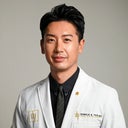Is it true that Dysport may interfere with facial muscles? Does injection for wrinkles in the corner of the mouth and forehead pose any complications?
Answers (8)
From board-certified doctors and trusted medical professionals
Dr. Sonia Badreshia-Bansal, MD

Dr. Sonia Badreshia-Bansal, MD
Board Certified Dermatologist
Answer
Dr. Donald B. Yoo, MD, FACS

Dr. Donald B. Yoo, MD, FACS
Board Certified Facial Plastic Surgeon
Answer
Dr. Kenneth Dembny, II, MD

Dr. Kenneth Dembny, II, MD
Board Certified Plastic Surgeon
Answer
Dr. Martie Gidon, MD, FRCPC, FAAD
Dr. Martie Gidon, MD, FRCPC, FAAD
Certified Dermatologist
Answer
Dr. Jeffrey Adelglass, MD
Dr. Jeffrey Adelglass, MD
Board Certified Otolaryngologist
Answer
Dr. Grant Stevens, MD
Dr. Grant Stevens, MD
Board Certified Plastic Surgeon
Answer
Dr. Donna Bilu Martin, MD
Dr. Donna Bilu Martin, MD
Board Certified Dermatologist
Answer
Dr. Mitchell Schwartz, MD - Account Suspended
Dr. Mitchell Schwartz, MD - Account Suspended
Dermatologic Surgeon, Board Certified in Dermatology
Answer
More Dysport Questions
See all Dysport Q&AWE SEND PRETTY
EMAILS
What’s trending? Who’s turning heads? Which TikTok myths need busting? We’ve got you. No fluff, no gatekeeping—just real talk. Get our free, unfiltered newsletter.